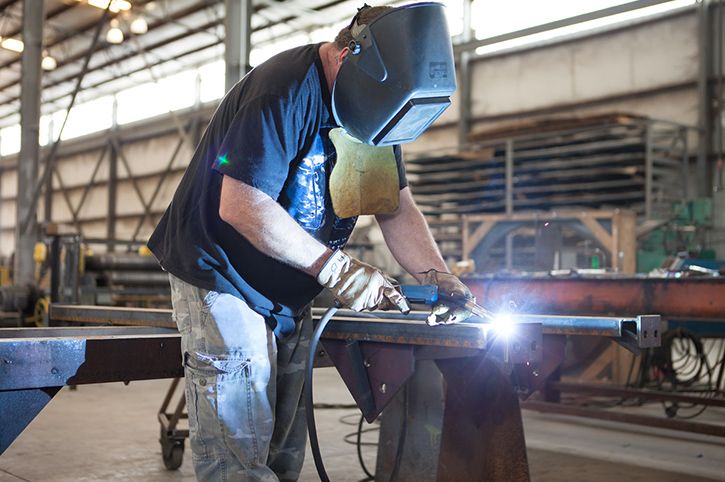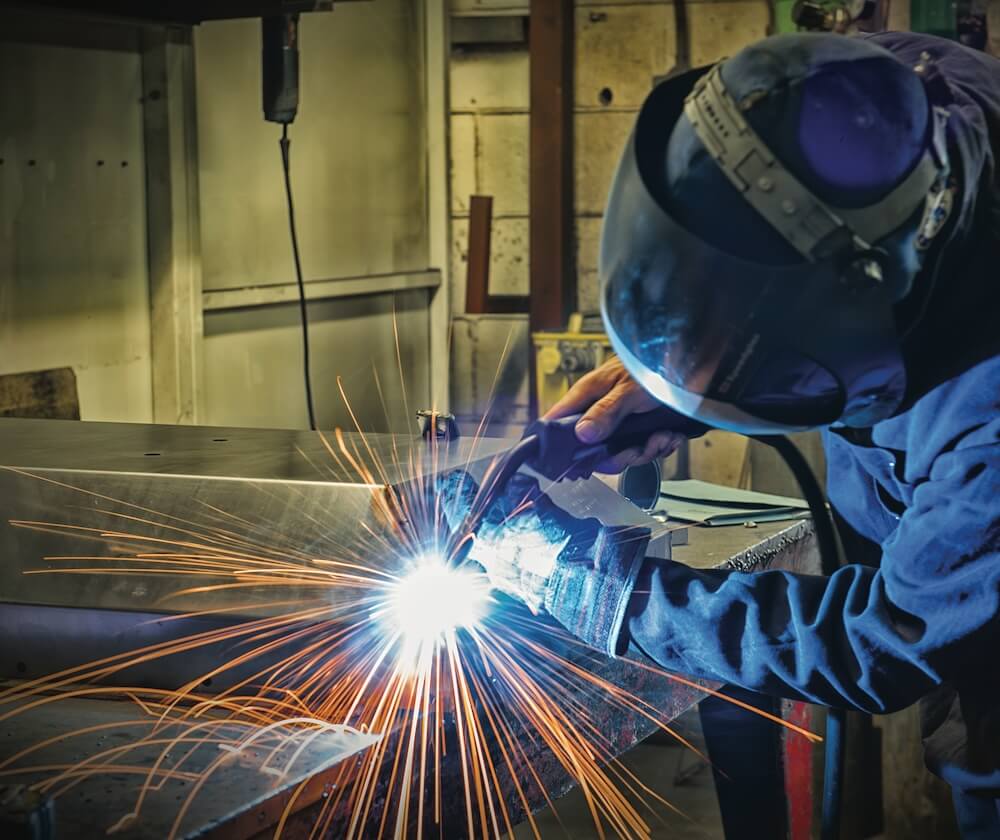Usual Welding Repair Work Issues and Just How to Address Them Successfully
Welding fixings commonly run into a series of problems that can endanger the stability of the end product. Usual troubles consist of insufficient penetration, porosity, and misalignment, amongst others. Each defect presents unique challenges that need particular methods for resolution. Recognizing these concerns is essential for welders aiming to improve their outcomes and skills. This discussion will discover these usual welding repair service issues and efficient approaches to address them.
Insufficient Penetration
Inadequate infiltration happens when the weld metal falls short to completely fuse with the base product, leading to weak joints and prospective architectural failings. This concern frequently comes from not enough heat input, incorrect electrode angle, or incorrect welding rate. Welders may encounter poor penetration as a result of a mistake of the needed specifications for a specific material density or kind. Additionally, contamination on the base product's surface area can prevent reliable bonding, worsening the problem. To deal with insufficient penetration, welders need to guarantee appropriate setups on their devices and maintain a tidy job surface area. Normal evaluation of welds is suggested to identify any type of shortages early, permitting timely modifications and the prevention of jeopardized structural integrity in welded settings up.
Porosity
Porosity is a typical problem in bonded joints that materializes as tiny gas bubbles trapped within the weld steel. This issue can endanger the stability of the weld, bring about reduced toughness and potential failing under tension. Welding. Porosity typically occurs from contamination, moisture, or incorrect welding strategies, which allow gases to leave right into the liquified weld swimming pool. To deal with porosity, welders ought to guarantee proper surface area prep work, keep a clean functioning atmosphere, and utilize ideal welding criteria. Additionally, picking the appropriate filler material and protecting gas can minimize gas entrapment. Routine examination and screening of welds can assist recognize porosity early, guaranteeing timely rehabilitative activities are taken, thereby protecting the quality and integrity of the bonded structure
Misalignment
Misalignment in welding can arise from numerous factors, consisting of inappropriate arrangement and thermal development. Understanding the source is necessary for effective resolution. Several adjustment techniques are offered to straighten elements and assure structural integrity.
Root causes of Imbalance
Welding imbalance usually comes from a range of underlying problems that can compromise architectural integrity. One main cause is incorrect fit-up of components prior to welding, which can result in spaces and uneven surface areas. Variants in thermal development during the welding procedure can also cause distortion, specifically if the materials being signed up with have different coefficients of development. Furthermore, inadequate securing and fixturing might fall short to hold components firmly in place, bring about activity during welding. Badly kept devices, including welding devices and devices, may introduce variances in the weld grain, further contributing to misalignment. Ultimately, driver mistake, stemming from not enough training or experience, can additionally play a considerable duty in creating misaligned welds.
Adjustment Techniques Available
Resolving imbalance successfully needs a combination of restorative methods tailored to the specific problems handy. One usual method is using jigs or fixtures to hold elements in the right position throughout welding, making certain regular alignment. Additionally, pre-heating the products can aid minimize distortion and boost fit-up. For considerable imbalance, mechanical adjustment techniques, such as making use of hydraulic jacks or clamps, can be utilized to correct the position before welding. Post-weld warm treatment might likewise be essential to relieve stresses triggered by misalignment. Cautious examination and change during the arrangement phase can prevent imbalance problems from becoming significant problems, promoting a smoother welding process and enhancing general architectural honesty.
Distortion
Distortion is a typical obstacle in welding that can develop from different variables, consisting of irregular home heating and cooling. Comprehending the sources of distortion is important for carrying out reliable avoidance techniques. Addressing this concern not only enhances architectural stability yet likewise enhances the general high quality of the weld.
Root causes of Distortion
When based on the intense heat of welding, materials often undergo adjustments that can bring about distortion. This sensation mostly develops from thermal development and tightening during the welding procedure. As the weld area warms up, the material expands; upon cooling, it acquires, which can create internal stresses. On top of that, irregular home heating throughout a work surface can worsen these stresses, causing warping or bending. The kind of product additionally plays a considerable role; metals with differing thermal conductivity and coefficients of expansion might respond in different ways, resulting in unforeseeable distortions. In addition, bad joint style and inadequate fixturing can add to imbalance during welding, boosting the likelihood of distortion. Comprehending these causes is essential for efficient welding fixing and prevention approaches.
Avoidance Techniques
Effective avoidance methods for distortion during welding concentrate on regulating heat input and making certain correct joint style. Preserving a constant warm input assists to lessen thermal development and contraction, which can bring about distortion. Utilizing methods pop over to this web-site such as preheating the workpiece can likewise minimize the temperature gradient, promoting consistent heating. Additionally, selecting suitable joint layouts, such as T-joints or lap joints, can boost stability and lower tension concentrations. Implementing appropriate fixturing to safeguard the workpieces in position better help in preserving placement during the welding process. Lastly, staggered welding sequences can distribute warmth much more equally, avoiding local distortion. By applying these strategies, welders can substantially reduce the probability of distortion and improve the general high quality of their welds.
Splitting
Breaking is a typical concern run into in welding repair work, usually resulting from various factors such as inappropriate cooling prices, material option, or inadequate joint preparation. The incident of fractures can significantly jeopardize the integrity of the weld, causing possible failings during operation. To resolve this issue, welders should initially examine the origin, making sure that materials are compatible and suitably chosen for the particular application. Furthermore, controlling the cooling price during the welding process is necessary; rapid air conditioning can induce stress and anxiety and bring about splitting. Appropriate joint design and prep work additionally add to minimizing the risk. Carrying out these strategies can enhance weld top quality and durability, inevitably lowering the chance of breaking in ended up weldments.

Insufficient Blend
A significant problem in welding fixings is insufficient fusion, which takes place when the weld steel does not appropriately bond with the base material or previous weld passes - Belgrade Welding. This problem can cause weak points in the joint, potentially jeopardizing the honesty of the welded structure. Aspects contributing to insufficient blend include not enough warmth input, incorrect welding technique, and contamination of the surfaces being joined. To resolve this issue efficiently, welders ought to ensure appropriate pre-weld cleansing and surface area preparation, as well as adjust their welding criteria to accomplish adequate infiltration and blend. Routine assessment during the welding procedure can additionally assist identify insufficient fusion early, enabling prompt corrective procedures to enhance the total quality of the weld
Overheating
While welding repair services can enhance architectural honesty, overheating provides a considerable difficulty that can bring about material deterioration. Too much heat throughout welding can change the mechanical residential or check this commercial properties of steels, causing reduced stamina, raised brittleness, and warping. This phenomenon is specifically important in high-stress applications where architectural dependability is critical. Identifying overheating can entail visual assessments for discoloration or distortion, as well as monitoring temperature level throughout the welding procedure. To minimize the risks connected with getting too hot, welders need to use suitable methods, such as managing warmth input, readjusting traveling rate, and using appropriate filler materials. Furthermore, applying pre- and post-weld warmth therapies can help recover material buildings and improve the general quality of the repair service, guaranteeing lasting efficiency and safety and security.
Frequently Asked Concerns
What Are the Typical Signs of a Welding Flaw?

Just How Can I Test My Welds for Quality?
To evaluate welds for top quality, one can utilize aesthetic inspections, ultrasonic testing, and radiographic methods. Each strategy ensures structural integrity, recognizes flaws, and validates adherence to specified criteria, inevitably improving the reliability of the welded joints.
What Security Precautions Should I Take While Welding?
When welding, one must focus on safety by wearing appropriate personal protective tools, guaranteeing proper ventilation, securing flammable products away, maintaining a tidy work area, and recognizing environments to avoid injuries and mishaps.
Can I Fix a Weld Without Redesigning the Entire Joint?
Repairing a weld without remodeling the whole joint is feasible, relying on the damage (Montana Mobile Welding and Repair Fabrication). Techniques such as grinding, including filler material, or utilizing a welding process can properly resolve details imperfections while protecting the surrounding structure
What Devices Are Necessary for Effective Welding Repair Works?
Important devices for efficient welding repairs consist of a welding device, cable brush, mill, protective gear, clamps, and filler products. Each device plays an important role in guaranteeing quality and safety and security throughout the repair service process. Porosity generally emerges from contamination, moisture, or improper welding methods, which allow gases to get away into the molten weld swimming pool. Improperly maintained equipment, including welding makers and tools, might present incongruities in the weld bead, additional contributing to imbalance. When subjected to the intense warm of welding, products frequently undertake changes that can lead to distortion. Splitting is a common issue experienced in welding repair services, frequently resulting from various aspects such as inappropriate air conditioning prices, product selection, or inadequate joint preparation. A significant issue in welding repair work is insufficient fusion, which takes place when the weld steel does not effectively bond with the base material or previous weld passes.